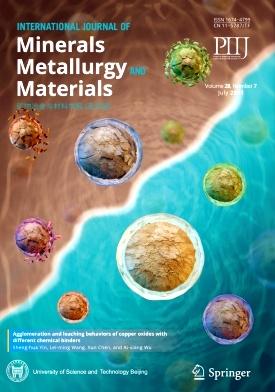Waste heat recovery from hot steel slag on the production line: Numerical simulation, validation and industrial test
Abstract
Waste heat recovery from hot steel slag was determined in a granular bed through the combination of numerical simulation and an industrial test method. First, the effective thermal conductivity of the granular bed was calculated. Then, the unsteady-state model was used to simulate the heat recovery under three different flow fields (O-type, S-type, and nonshielding type (Nontype)). Second, the simulation results were validated by in-situ industrial experiments. The two methods confirmed that the heat recovery efficiencies of the flow fields from high to low followed the order of Nontype, S-type, and O-type. Finally, heat recovery was carried out under the Nontype flow field in an industrial test. The heat recovery efficiency increased from ∼76% and ∼78% to ∼81% when the steel slag thickness decreased from 400 and 300 to 200 mm, corresponding to reductions in the steel slag mass from 3.96 and 2.97 to 1.98 t with a blower air volume of 14687 m3/h. Therefore, the research results showed that numerical simulation can not only guide experiments on waste heat recovery but also optimize the flow field. Most importantly, the method proposed in this paper has achieved higher waste heat recovery from hot steel slag in industrial scale.

 求助内容:
求助内容: 应助结果提醒方式:
应助结果提醒方式:


